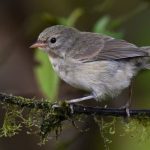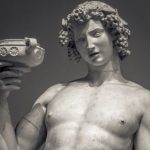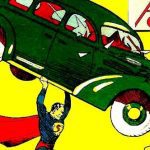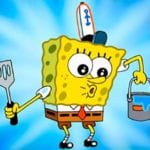 Miscellaneous
Miscellaneous  Miscellaneous
Miscellaneous  Pop Culture
Pop Culture 10 Disney Channel Alums Who Aged into Surprising Careers
 History
History 10 Shocking Roman Assassinations That Inspired the Ides of March
 Movies and TV
Movies and TV 10 Practical Movie Monsters Remade with CGI
 Politics
Politics 10 U.S. Presidents Who Cheated on Their Wives
 Humans
Humans The 20th Century’s 10 Most Famous Centenarians
 History
History 10 Influencers Who Lived Centuries before Social Media
 Miscellaneous
Miscellaneous 10 Ancient Etiquette Rules You Never Knew Existed
 Our World
Our World Planet Earth’s 10 Most Hardcore Natural Creations
 Movies and TV
Movies and TV 10 Times Twin Movies Competed with Each Other
 Miscellaneous
Miscellaneous 10 Reasons the Birth Rate Drop Could Be Irreversible
 Pop Culture
Pop Culture 10 Disney Channel Alums Who Aged into Surprising Careers
 History
History 10 Shocking Roman Assassinations That Inspired the Ides of March
Who's Behind Listverse?

Jamie Frater
Head Editor
Jamie founded Listverse due to an insatiable desire to share fascinating, obscure, and bizarre facts. He has been a guest speaker on numerous national radio and television stations and is a five time published author.
More About Us Movies and TV
Movies and TV 10 Practical Movie Monsters Remade with CGI
 Politics
Politics 10 U.S. Presidents Who Cheated on Their Wives
 Humans
Humans The 20th Century’s 10 Most Famous Centenarians
 History
History 10 Influencers Who Lived Centuries before Social Media
 Miscellaneous
Miscellaneous 10 Ancient Etiquette Rules You Never Knew Existed
 Our World
Our World Planet Earth’s 10 Most Hardcore Natural Creations
 Movies and TV
Movies and TV 10 Times Twin Movies Competed with Each Other
10 Books That Were Banned for All The Wrong Reasons
It’s almost hard to believe that books are still being banned in the world. Aside from a crackpot dictatorship or genuinely sensible reasons, such as keeping Stephen King’s Cujo out of preschools, you’d think we’d have moved past such an archaic form of censorship by now. But alas, the times have yet to be a’changing. And while some reasons for banning a book make at least a little sense, these explanations are just baffling.
10 James And The Giant Peach: A Sexual Spider
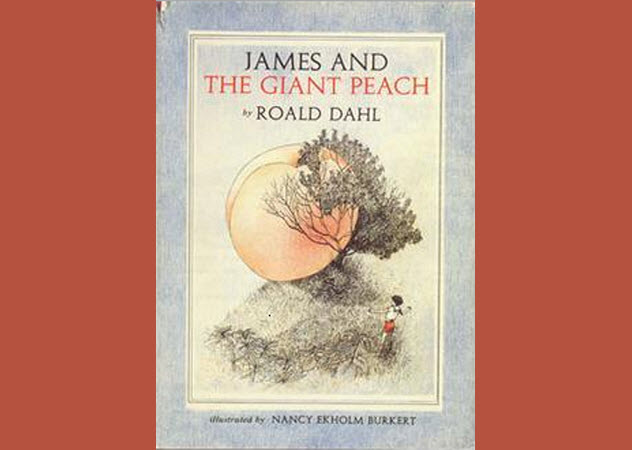
James and the Giant Peach is pretty rough for a children’s book. It has smoking, swearing, violence, and all kinds of mature themes that usually don’t appear in kids’ books, but the overarching message is one of friendship and learning to face your fears.
The story is about a young boy named James who was taken in by his two mean, abusive aunts after his parents were killed by a rhinoceros. An old man then gives James a magic potion, which he accidentally spills onto a peach tree and a few bugs. A giant peach grows, the insects learn to talk, and they all have a grand adventure high above the Atlantic Ocean.
All said and done, James and the Giant Peach is number 50 on the American Library Association’s list of the 100 most frequently challenged books between 1990 and 1999, right behind Cujo and a few spots ahead of American Psycho.
Why has it been banned? Just about any reason you can think of—including the promotion of communism—but the most absurd has to be the reason given in 1986 when the book was banned from a town in Wisconsin. According to the town, a passage in which Miss Spider licks her lips was just a little too risque for their tastes. As reported by The Times of London, that action could be “taken in two ways, [one of them] sexual.”
9 1984: Not Communist Enough

If James and the Giant Peach is steeped in veiled praise for communism, George Orwell’s 1984 is apparently drenched in it. In 1981, it was challenged in Jackson County, Florida, for its alleged pro-communism message, and it’s seen its fair share of controversy around the world. Published in 1949, it’s the hallmark story of an oppressive government that uses surveillance and manipulation to keep its population in check.
But if the fine folks in Florida were right, then one ban came from a surprising place. From the moment 1984 was translated into Russian, the Soviet Union placed a blanket ban on the novel and burned all the copies they could get their hands on. Why? It wasn’t communist enough for Stalin’s liking. Apparently, he saw what most others couldn’t: Among other things, the book was an attack on Stalin’s brand of communism, and just like Big Brother in the novel, Stalin wasn’t too big on criticism.
8 Slaughterhouse-Five: Magic Fingers And God’s Fly
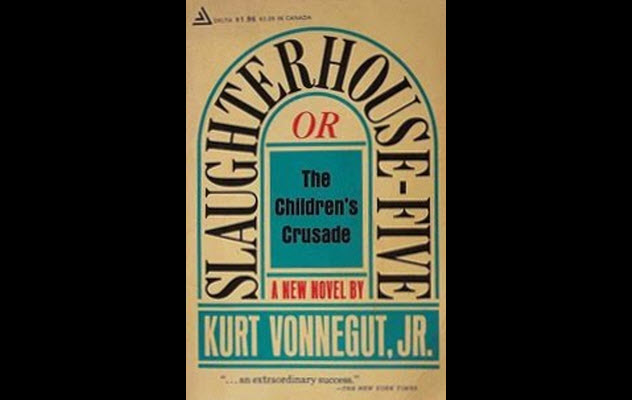
Kurt Vonnegut’s 1969 novel Slaughterhouse-Five is the kind of book that you either love or hate. If you piece the right parts together, you’ll get the story of Kurt Vonnegut’s own experience at the firebombing of Dresden in World War II, which he survived by the dubious luck of being imprisoned in a meat locker at the time.
But the protagonist of the novel, Billy Pilgrim, is also “unstuck in time,” which means that the book makes precious little chronological sense. One minute, he’s in his mansion after the war getting massaged to sleep by a Magic Fingers machine attached to his bed. The next moment, he’s in the past in an alien zoo being forced to make love to a porn star for the Trafalmadorians’ entertainment.
It’s for scenes like the latter that the novel is usually banned. It’s been cited for obscene language, explicit sexual scenes, and “an act of bestiality.” If you’re talking about, say, middle schoolers, those are decent reasons to at least question a book’s merits for that age group.
But in 1985, a high school in Owensboro, Kentucky, threw logic out the window and banned Slaughterhouse-Five for the aforementioned “Magic Fingers” passages. For context, the Magic Fingers was a machine that simply vibrated the main character’s bed because he was depressed and had trouble sleeping. It would “jiggle him while he wept.” Compared to forced copulation for the pleasure of extraterrestrials, that seems a little benign.
But the Owensboro school didn’t stop there. They also made sure to mention that they didn’t like one particular sentence out of the entire novel: “The gun made a ripping sound like the opening of the fly of God Almighty.”
7 Captain Underpants: Partial Nudity
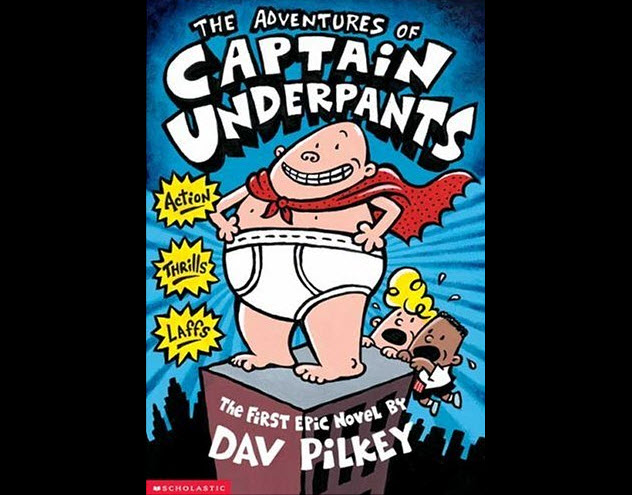
You’ve probably seen a Captain Underpants book at some point in your life. If you’re young enough, you’ve probably even read a few of them. The stories, meant for middle-grade readers, follow two young boys and their superhero friend who wears a pair of tighty-whities and fights crime. Written and illustrated by Dav Pilkey, these books are quirky, have the sense of humor that elementary kids love, and end each adventure with a good moral or a lesson that the protagonists have learned.
So why do they keep getting banned? Partial nudity, which of course refers to the amorphous, cartoonish body of Captain Underpants himself, who “fights for Truth, Justice, and all that is Pre-Shrunk and Cottony.” As the cover of each installment emphasizes, Captain Underpants wears nothing but a pair of underwear and a red cape as he fights crime.
But that’s also the whole point of the books. They aren’t particularly poignant, and the jokes are mostly centered around farts/poop/underwear/name-your-favorite-eight-year-old-joke, but again, that’s sort of the point. They’re written for eight-year-olds, and as Slate points out, they’re something that eight-year-olds can actually get excited about reading.
6 Where The Sidewalk Ends: Cannibalism
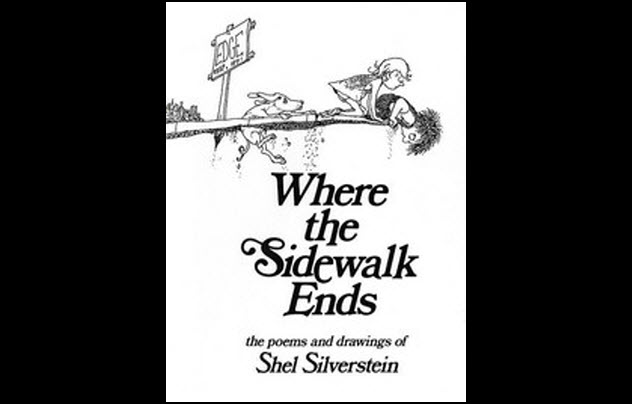
All too often, book bans are targeted at children’s books (Fifty Shades of Grey notwithstanding). Although the intentions are probably pointed in the right direction, there are some who would say that the very idea of putting a blanket ban on something teaches the wrong kind of lesson. After all, what does that say about the whole concept of personal growth and the wonders of discovery?
Few people have fallen victim to that kind of thinking more so than Shel Silverstein, author of perennial classics like The Giving Tree, A Light in the Attic, and Where the Sidewalk Ends. It’s with the last one that things get really ridiculous.
If you’ve never read it, Where the Sidewalk Ends is a collection of Silverstein’s poems for children, and one of the entries is a poem called “Dreadful.” In 1993, a school district in Bloomsburg, Pennsylvania, banned the whole book because of that poem, which repeated the line “Someone ate the baby.” (Here’s the whole poem for context.) Their reasoning for the ban was that they were afraid kids might decide to try out cannibalism after reading the poem.
Perhaps even more ridiculous, a school in Wisconsin banned A Light in the Attic because of the poem “Ladies First,” which they said “glorified Satan, suicide, and cannibalism.”
5 The Diary Of Anne Frank: Too Depressing
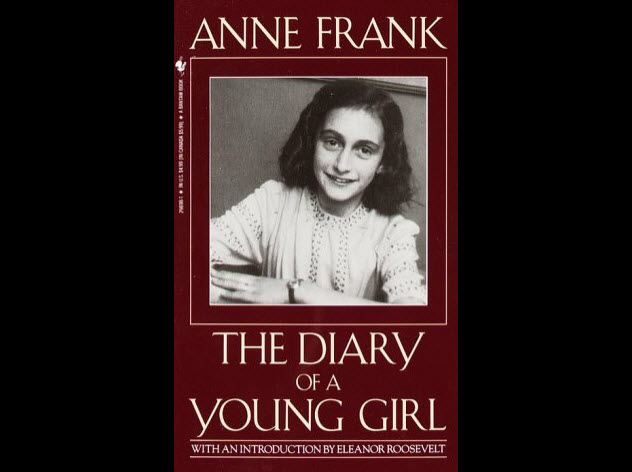
The Diary of a Young Girl by Anne Frank (often just called The Diary of Anne Frank) is a heartbreaking portrait of a young Jewish girl who was caught up in the horrors of ethnic cleansing during World War II. It teaches somewhat older children about the dangers of the wrong type of thinking, the real trials to which everyday people were subjected, and the power of hope and human goodness when all else seems lost.
But for one school board in Alabama, life lessons like that are just too much of a downer. Those were their actual words. In another case in Culpeper County, Virginia, the newly published Definitive Edition contained too many sexual references describing Anne Frank’s emerging puberty that weren’t included in the original edition. The reason they won’t use it? One parent (from a school system of 7,600 students) voiced a complaint about the content.
4 The Absolutely True Diary of a Part-Time Indian: Racial Undertones
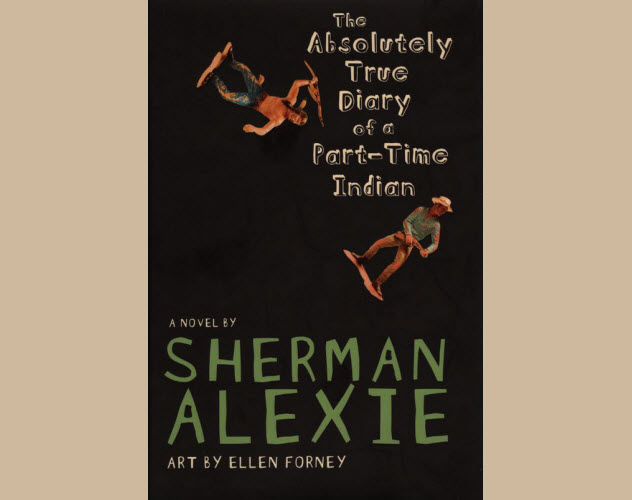
The Absolutely True Diary of a Part-Time Indian was written by Sherman Alexie in 2007. It’s a bildungsroman, or coming-of-age story, about a young Native American boy’s decision to move away from the Spokane Indian Reservation and go to an all-white school. As you might expect, the main character, Junior, has to deal with a lot of discrimination along the way.
The plot of this young adult novel deals with complex themes like alcoholism, violence, and bullying, all portrayed as obstacles which Junior must overcome. In that respect, it mirrors the lives of many young adults, and it shows how one person in that scenario moved past those roadblocks to achieve his goals in life.
It’s this unflinching portrayal of the trials which so many children face that garnered True Diary the National Book Award for Young People’s Literature in 2007. Alexie took his own difficult experiences as a child and distilled them into an easily digestible form while still facing the issues head-on. Yes, racism is still present in modern schools. Yes, many adults have problems that reflect upon young people. But through it all, Junior finds a lesson to be learned that helps him grow as a person.
So why was it banned? For the same reasons that it won awards. Parents didn’t like the fact that it depicted bullying, drinking, and racism in schools. It was simply too realistic. In fact, it was the most challenged book of 2014.
But this story has something of a happy ending. When schools in Idaho banned The Absolutely True Diary of a Part-Time Indian, the students fought back. More than 300 students campaigned for the book to be kept in schools, with some students even handing out free copies of the book.
3 The Scarlet Letter: Pornographic
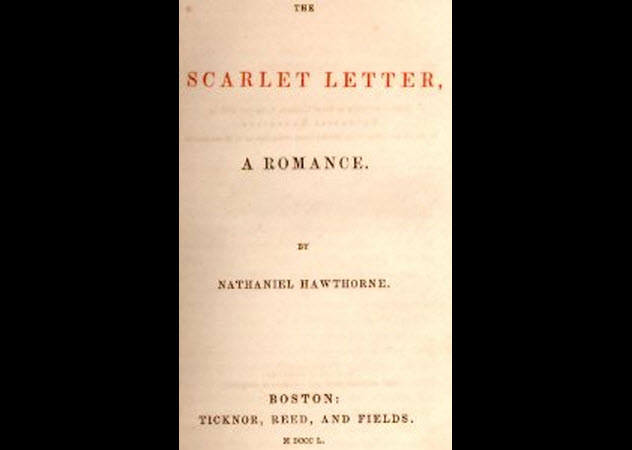
At the risk of getting to the point too quickly, The Scarlet Letter doesn’t have a single sex scene. Often assigned in high school English classes, The Scarlet Letter is the story of Hester Prynne, a woman who commits adultery in a Puritan settlement in 17th-century Boston and is forced to sew the letter “A” onto her clothes to disclose that fact. One of the prevailing themes is, of course, adultery and how one community dealt with that act.
The book was banned several times right from the get-go, but in 1977, a group of parents tried to resurrect that tradition by claiming that the novel was “pornographic and obscene.” What the novel actually portrayed wasn’t the act itself but the repercussions of it, which, honestly, might be a more uncomfortable subject than the physical act of putting one and one together to make one.
2 Merriam-Webster Dictionary: Defining “Oral Sex”
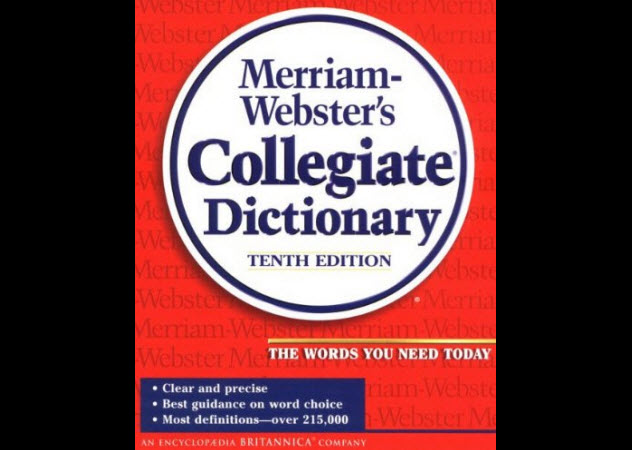
Merriam-Webster defines the word “ban” as “to forbid someone from using something; to say that something cannot be used or done.” Those are pretty harsh words coming from a book that isn’t allowed in some schools. But then again, it’s a dictionary, and if it’s not being honest, it’s just not doing its job.
Tell that to the school board in Menifee, California, who banned the Merriam-Webster Dictionary because it gave the definition of “oral sex.” And it may not be off the hook yet. As Betti Cadmus, district spokesman, told The Guardian, “It’s hard to sit and read the dictionary, but we’ll be looking to find other things of a graphic nature.” Fingers crossed that they don’t make it to the “F” section.
Thankfully, there are still some people who feel that banning a dictionary is absolute lunacy. One father in the school district said to the local press, “You have to draw the line somewhere. What are they going to do next, pull encyclopedias because they list parts of the human anatomy like the penis and vagina?”
1 Vampire Academy: Ban on Future Books
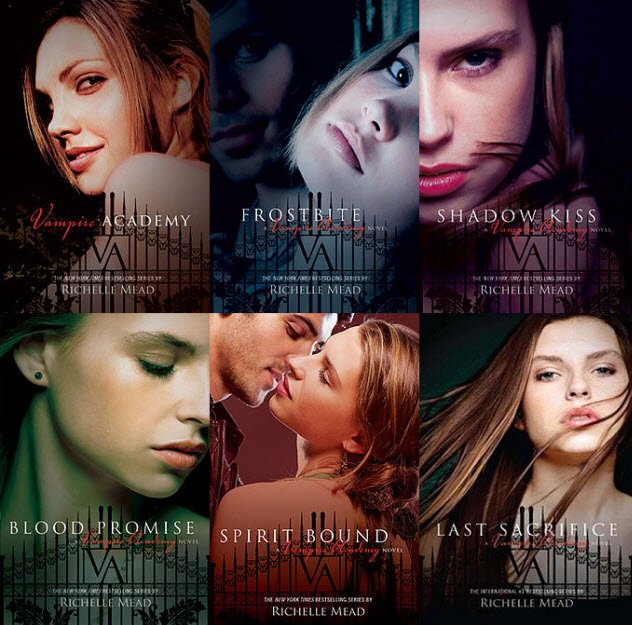
Vampire Academy isn’t a literary gold mine. It’s the story of a girl who’s training to defeat undead vampires. Along the way, she gets swept up in a romantic subplot with her trainer. Fans of the series call it complex with interlaced themes and “top-notch prose,” and by most accounts, the books are pretty decent. Regardless of anyone’s interest in vampire stories, the series has sold over eight million books worldwide, with one installment already turned into a feature film.
In 2009, there were three books in the series. But they were all banned by a school district in Stephenville, Texas. By “all,” they meant even the books that hadn’t been written yet. There are now six books in the series, and they’re all banned.
In a way, this epitomizes why book bans are ridiculous because this case went so far as to ban books that hadn’t been written yet. There are plenty of bans for legitimate reasons, but banning a book that hasn’t even been taken out of an author’s head and put onto paper is an example of fear more than logic. If that’s allowed in schools, it’s difficult to imagine a future where the logic of, say, racial equality or sexual acceptance is seen as a given rather than an exception. As banned author Judy Blume puts it, “If parents and kids can talk together, we won’t have as much censorship because we won’t have as much to fear.”
Buy Eli Nixon’s novel Son of Tesla or read his free short story about a demonic parrot and a reluctant psychopath.
